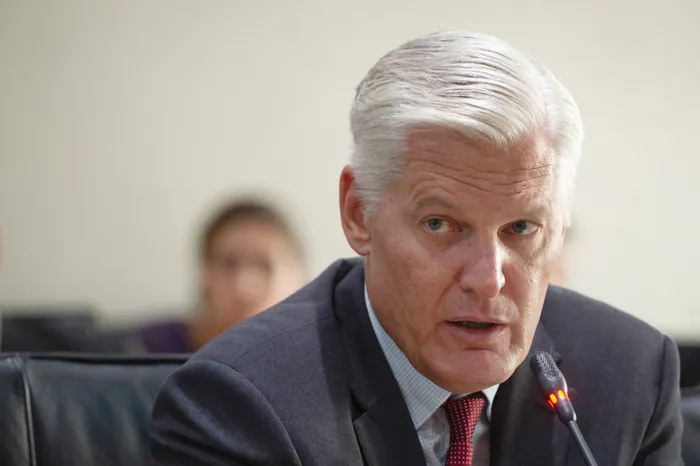Keep tariff hikes, De Ruyter asks court

Sacked Eskom chief executive Andre de Ruyter. Picture: Armand Hough/African News Agency (ANA)
Cape Town - Sacked Eskom chief executive Andre de Ruyter was prepared to defend the 18.65% electricity price increase the power utility was granted by the National Energy Regulator of SA (Nersa), and had asked the courts to dismiss the application to have it reviewed and set aside.
This emerged from De Ruyter’s affidavit filed in the matter involving Eskom versus the UDM, ActionSA, Numsa and others.
These groups want the court to force Eskom to provide reasonable notice of load shedding and Mineral Resources and Energy Minister Gwede Mantashe to make decisions and take steps to ensure the availability of electricity generation capacity.
They also want Mantashe and his Public Enterprises counterpart Pravin Gordhan to provide certain documents on decisions related to electricity.
In his affidavit, De Ruyter, who has come under fire from the ANC, including Gordhan, said the application should be dismissed.
He stated that load shedding was a complex answer that dated back to 1998.
De Ruyter said the load shedding that South Africa was experiencing on Monday had been at least 25 years in the making.
Over this period, a confluence of factors – the bulk of which were entirely out of Eskom’s control – have inhibited Eskom’s ability to ensure adequate electricity supply, he said.
“Since 1998, there has been insufficient investment in new generation capacity, a responsibility vested in the Minister of Minerals and Energy.
As a result, Eskom has had to operate with insufficient generation capacity. At present, therefore, and as Eskom has consistently and publicly explained, it requires 4000 to 6000 MW of additional generation capacity. It cannot obtain that additional capacity unless new capacity is unlocked.
“For approximately 15 years, Nersa has not permitted Eskom to recover cost-reflective tariffs, leading to a revenue shortfall of approximately R40 billion to R60bn per annum in recent years.
Eskom has repeatedly explained to Nersa the need for cost-reflective tariffs.
This need was recognised in the Department of Mineral Resources and Energy’s Electricity Pricing Policy, 2008 and in the proposed revisions to the Electricity Pricing Policy published for public comment in February 2022.
Despite this, the need for cost-reflective tariffs has not been met.”
He said Eskom recognised that load shedding was taking a heavy toll and negatively impacting on the lives of South Africans and the economy.
“If supply and demand are not kept in balance on the national electricity grid, the grid will collapse and the entire country will experience a blackout or total loss in electricity supply.
“How long such a blackout would last is impossible to predict with any certainty.
“However, for the reasons explained by Eskom’s General Manager of Transmission System Operator Ms Isabel Fick, Eskom estimates that it could take up to several weeks to restore the electricity grid, that length of time being highly dependent on the state of the grid when the black-out occurs.
“Without wishing to sound alarmist, the consequences of such a blackout would be catastrophic,” said De Ruyter.
“Eskom has to use its limited resources to balance and optimise the short, medium and long-term electricity supply needs of the country.
“As is explained in the affidavit of Eskom’s Chief Financial Officer, Mr Cassim, Eskom’s resources are extremely constrained –predominantly due to many years of having non-cost reflective tariffs imposed by Nersa (with the result that Eskom does not recover the cost of supplying electricity) and ballooning municipal debt (now in the region of R57 billion).
“Eskom must maximise the benefit it derives from the use of its financial and human resources.”
He said short-term solutions were likely to be less sustainable.
Cape Town
Related Topics: